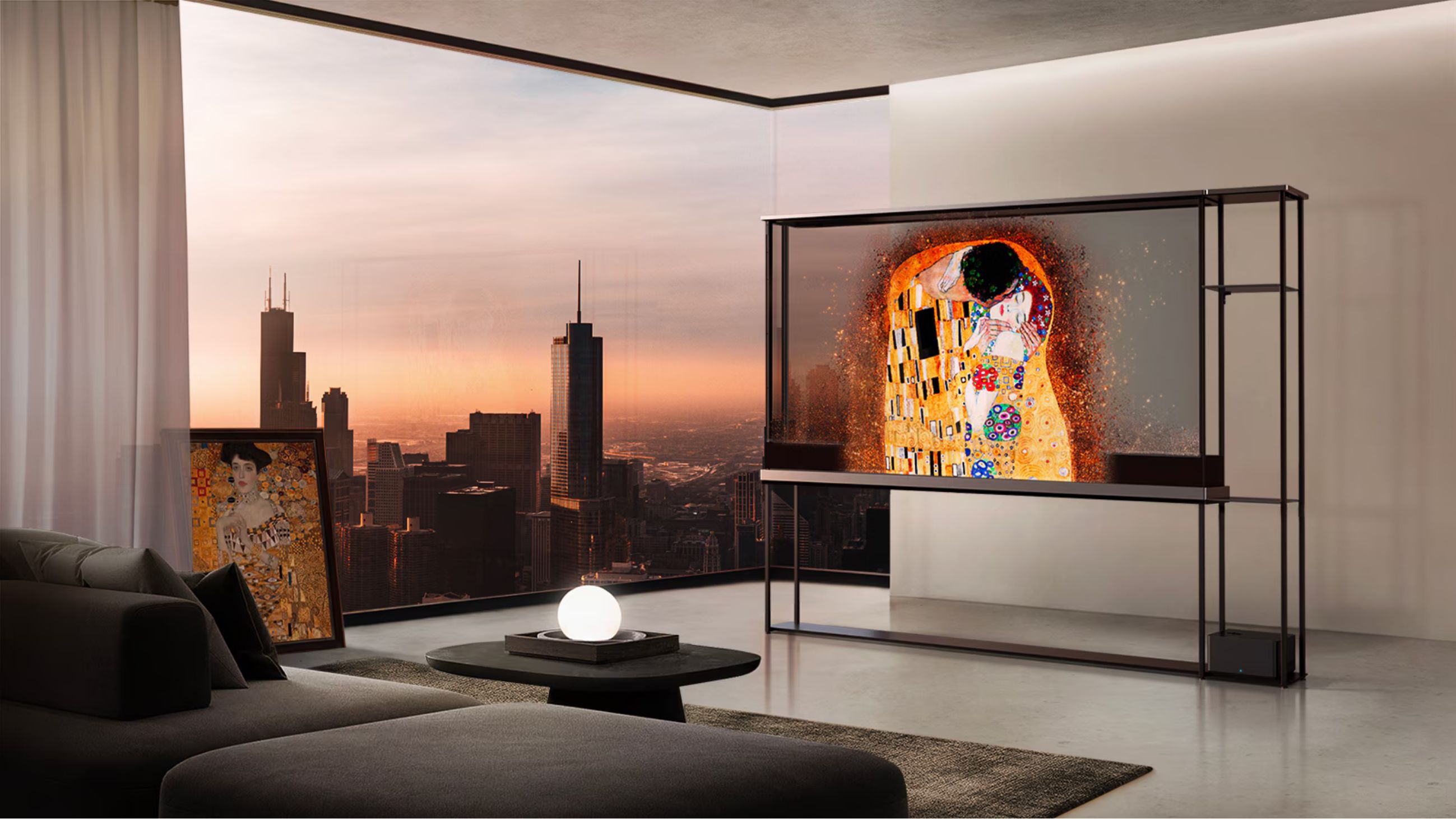Are "Transparent TVs" the Next Big Thing? This Might Be the End of Imposing Screens in Your Living Room
If you have the money, transparent TVs could be an intoxicating taste of the future


For people who value living in a beautiful space, TVs are something of an eyesore.
It’s a catch-22, as well — bigger screens allow for a far better experience watching the latest boxset, but the larger the panel, the less appealing it looks.
Could transparent televisions be the answer? Potentially, but while they’re starting to pick up traction with some of the world's best TV brands, they’re still a long way from being mainstream — and they will likely have a couple of major drawbacks for years to come.
What are transparent TVs?
Transparent TVs are what they sound like: televisions that display a high-quality picture when turned on, but where the screen turns transparent when switched off.
It all sounds a bit science fiction, but the technology could be almost ready for showtime, with TV giants Samsung and LG showing off their own takes on the hardware at this year’s CES. While the former’s micro-LED panel was just a proof of concept, LG says that its OLED model will be available to buy before 2024 is out.
Why would I want one?
The appeal here is obvious. While your living room TV can’t be completely invisible (LG’s model still features a thin frame boxing it in, and you’ll presumably want to connect your visible Blu-Ray player and games console), if the screen part is transparent, it’s considerably less imposing, and lets you to enjoy the natural decor of your room instead of a black rectangle.
For years, manufacturers have been trying to have their cake and eat it too, eager to make the biggest screens possible without imposing on a room’s style. Thinner bezels and the switch to flat screens have certainly helped, but even Samsung’s The Frame — a TV that looks like framed art when not in use — isn’t really fooling anyone.
The Livingetc newsletters are your inside source for what’s shaping interiors now - and what’s next. Discover trend forecasts, smart style ideas, and curated shopping inspiration that brings design to life. Subscribe today and stay ahead of the curve.

With a switch to transparent technology, you might be able to have a giant screen without messing up your decor. And that’s an exciting prospect.
There’s also potential for a fraction of the panel to be used, while the rest remains transparent. The press release accompanying LG’s OLED Signature T mentions a ‘T-Bar’ which can show news alerts, weather updates and song titles being played, “while the rest of the screen presents a clear, unobstructed view of the space behind it.”
What are the drawbacks?
There are two anticipated drawbacks with the technology at the moment.
The first is image quality. Although the two demo units from Samsung and LG both use widely available technology in OLED and micro-LED, transparent screens can’t produce black as regular TVs do. That’s why the LG model has a roll-up “contrast film” to give the black background, but even then it won’t be on a par with LG’s top OLED sets, missing features like the Micro Lens Array tech.
A weaker visual might be a price worth paying for a better experience when the TV is off, of course, but that brings us to the bigger barrier: price.

Samsung hasn’t announced any availability for its micro-LED set, and LG hasn’t put a price on its OLED Signature T yet, but it’s going to be expensive. How expensive? Well, back in 2020, Xiaomi announced a transparent TV for its tenth anniversary that sold for 49,999 yuan — or around $7,200.
That’s a relatively budget brand, too. LG’s OLED R rollable screen went for $100,000, so the company isn’t afraid of charging a premium for experimental form factors. And there have also been claims LG hasn’t decided whether or not the furniture that facilitates the TV’s invisibility will be bundled or sold separately yet…
Are transparent TVs the next big thing?
At the time of writing, transparent TVs are unlikely to be the next big thing for most people. The high cost of entry means that they’ll likely appeal to those for whom money is no object — and only if they value room aesthetics over image quality.
But wider adoption in the retail space — shop windows which also show adverts for products, and so on — could drive early adoption and gradually advance the technology to a stage where it’s competitive on both price and image quality. And if that happens, then all bets are off.

Freelance contributor Alan has been writing about tech for over a decade, covering phones, drones and everything in between. Previously Deputy Editor of tech site Alphr, his words are found all over the web and in the occasional magazine too. He often writes for T3 and Tom's Guide. When not weighing up the pros and cons of the latest smartwatch, you'll probably find him tackling his ever-growing games backlog. Or, more likely, playing Spelunky for the millionth time.